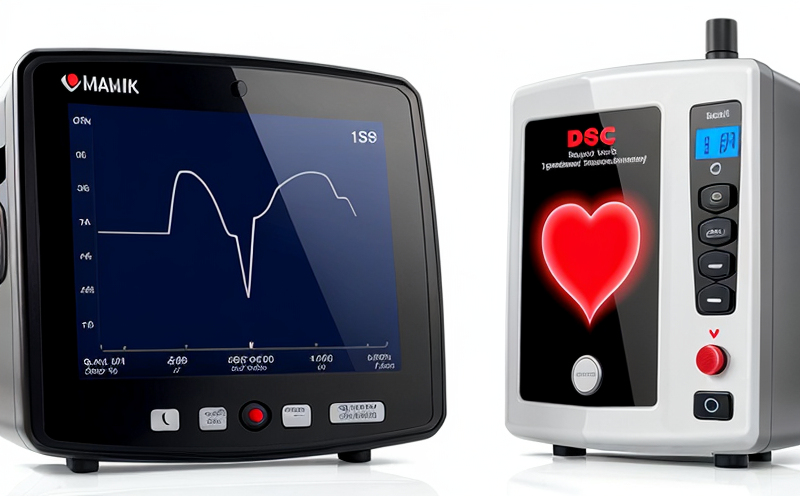ISO 5840 Mechanical Heart Valve Opening and Closing Dynamics Testing
The ISO 5840 mechanical heart valve opening and closing dynamics testing is a critical procedure used to evaluate the performance of mechanical heart valves. This test assesses how effectively a mechanical heart valve functions during both the open and closed stages, ensuring it operates within safe and effective parameters. The primary focus is on the dynamic behavior of the valve under various loading conditions that mimic real-world cardiac environments.
The testing methodology adheres to international standards such as ISO 5840:2019, which provides detailed guidelines for testing mechanical heart valves used in cardiothoracic surgery. This standard ensures that manufacturers and healthcare providers can rely on consistent test results across different laboratories, contributing to the reliability of medical devices.
The procedure involves subjecting a valve specimen to simulated physiological loads using specialized testing equipment. These loads include pressure cycles that mimic the conditions experienced by a heart valve during systole (opening) and diastole (closing). The goal is to determine whether the valve can withstand these pressures without failing, while also ensuring it operates smoothly.
During the test, several key parameters are monitored:
- Opening pressure: This measures the minimum pressure required for the valve to fully open.
- Closing pressure: This indicates the maximum pressure that can be applied before the valve closes completely.
- Flow rate: The volume of blood flow through the valve during both opening and closing phases is measured.
- Elastic deformation: Any changes in the shape or structure of the valve due to repeated loading are recorded.
The testing process begins with thorough preparation of the valve specimen. This includes cleaning, sterilization, and ensuring that all components are correctly assembled according to manufacturer specifications. Once prepared, the valve is placed into a hydraulic or pneumatic testing machine designed specifically for this type of test.
During the actual testing, multiple cycles are conducted at different pressures and flow rates to simulate various physiological conditions. The results are then analyzed using sophisticated software that compares them against predefined acceptance criteria outlined in ISO 5840:2019. If any parameter falls outside acceptable limits, it indicates potential issues with the valve's design or manufacturing quality.
The importance of this test cannot be overstated, especially for medical devices intended to save lives. By identifying defects early in development, manufacturers can improve product reliability and patient safety. Moreover, compliance with international standards like ISO 5840 helps ensure that products meet global regulatory requirements, facilitating smoother market entry.
In summary, the ISO 5840 mechanical heart valve opening and closing dynamics test is essential for ensuring the safe and effective performance of critical medical devices. Its rigorous testing protocol provides valuable insights into a valve's durability, efficiency, and overall suitability for use in complex surgical procedures.
Industry Applications
The ISO 5840 mechanical heart valve opening and closing dynamics test finds extensive application within the medical device industry. Specifically, it is crucial for evaluating the performance of mechanical heart valves used in cardiothoracic surgeries. These devices play a vital role in treating severe cardiovascular conditions such as mitral valve regurgitation or stenosis.
By subjecting these valves to simulated physiological loads, manufacturers can assess their ability to withstand the stresses encountered during typical cardiac operations. This testing ensures that the valves function reliably under extreme pressure differences and maintain optimal flow rates throughout their operational cycle. Ensuring high-quality performance is critical for preventing complications such as valve failure or excessive wear.
The results of this test are also valuable for regulatory submissions, helping companies demonstrate compliance with relevant standards like ISO 5840:2019. Such compliance not only enhances the credibility of a company but also simplifies the process of gaining approval from various health authorities worldwide.
Moreover, the insights gained from these tests can inform continuous improvement efforts within R&D departments. Engineers and designers can use test data to refine valve designs, optimize material selection, and enhance overall performance characteristics. This iterative approach ensures that new generations of medical devices meet or exceed current standards while addressing emerging clinical needs.
In conclusion, the ISO 5840 mechanical heart valve opening and closing dynamics test is indispensable for maintaining high quality and safety standards in the medical device industry. Its applications extend beyond mere compliance; they encompass innovation, reliability, and patient care.
Why Choose This Test
The ISO 5840 mechanical heart valve opening and closing dynamics test is a cornerstone of quality assurance for manufacturers of cardiovascular devices. Here are several compelling reasons why this test should be prioritized:
- Precise Evaluation: It provides an accurate assessment of how valves perform under realistic conditions, ensuring they operate safely and effectively within the body.
- Compliance Assurance: The test ensures compliance with international standards like ISO 5840:2019, which are essential for regulatory approval.
- Enhanced Reliability: By identifying potential weaknesses early in development, manufacturers can improve the durability and longevity of their products.
- Patient Safety: Avoiding valve failures or malfunctions reduces risks associated with implantation surgeries, ultimately benefiting patients.
- Market Differentiation: Meeting stringent testing requirements demonstrates a commitment to excellence, setting brands apart in competitive markets.
- Cost Efficiency: Early detection of issues through comprehensive testing can prevent costly recall campaigns and redesigns post-market.
In addition to these benefits, the test fosters collaboration between R&D teams and regulatory bodies. It serves as a common ground for verifying that new innovations meet established safety and efficacy benchmarks, thereby streamlining the approval process.
Choosing this test not only enhances product quality but also strengthens brand reputation among healthcare professionals and patients alike. It underscores an unwavering dedication to innovation and patient well-being, positioning companies at the forefront of medical technology advancements.





